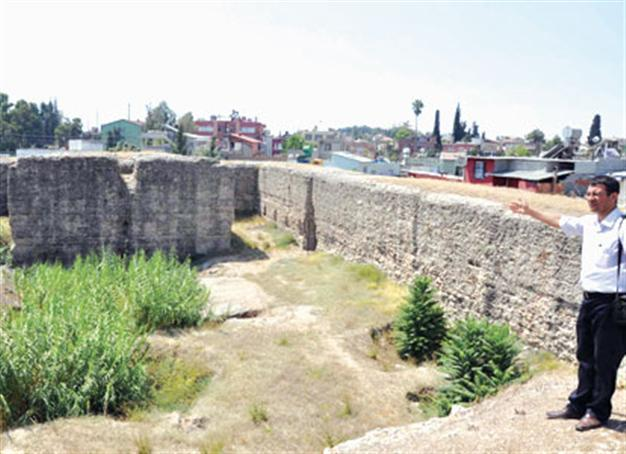
The Donuktaş temple in Tarsus lies between buildings. Experts say there should be environmental regulations around the ancient temple.
An ancient Roman temple called Donuktaş, found in the Tarsus district of Mersin, is awaiting a facelift to become a popular tourist attraction. Work needed on the 1,800-years-old heritage site will improve its presentation and raise its profile in the surrounding Adana-Mersin metropolitan area on the Mediterranean coast.
“Donuktaş should be included in ruin sites in Turkey’s ancient regions,” according to Tarsus museum director Mehmet Çavuş.
“Some researchers say the temple was used by the prophets, while some say it was used as a temple or a tomb for the prophets,” Çavuş said, speaking to the Anatolia news agency. The square-shaped temple is the oldest structure in the region and is the source of many local legends, he added.
Excavations conducted between 1982 and 1992 revealed that the temple dates to the second century, Çavuş said. “The excavations were not completed. The temple is made with Roman rocks and it is an important cultural heritage, not only for Turkey but for the whole world,” he said.
Research from the 19th century says the temple is estimated to be the tomb of King Sardanapal of the Assyrians, Çavuş said, adding that according to the recent excavation the temple might actually belong to Roman Empire era and made by Roman Emperor Commodus.
Buildings surrounding the temple make the building less valuable and hide it from sight, he said, adding that was why it cannot attract tourists.
“We need to work on the surroundings of this structure. There should be an environmental arrangement, with this kind of work the base of the temple and the main platform will be revealed,” said Çavuş.
“The Donuktaş temple is a structure that will contribute to the tourism potential of Tarsus,” he said, adding that the tourism potential of Tarsus increases each year and the cultural heritage sites should be renewed and restored in order to attract more tourists to the district.
Tarsus Municipal Mayor Burhanettin Kocamaz said he agreed that the temple needed to be renewed and restored. “The environment and the surroundings of the temple should be cleaned up,” said Kocamaz, adding that the care of the Donuktaş structure should be taken over by the government.
Donuktaş and its current condition will be evaluated in terms of its surroundings, Kocamaz said.
“After the environmental arrangements the temple will be evaluated if it is suitable to become a tourist attraction or not,” he said. “We hope that Tarsus will gain a new cultural heritage after all these years.”
Donuktaş: Temple or tomb?
At the first sight, the temple seems like a large tomb. It was built with the usage of Roman tomb stones in the second century.
During the 18th century the structure attracted many researchers from all over the world. However in 1836 a team of French researchers reportedly used dynamite during excavations and ruined the temple. After further research, experts concluded the temple looks like a tomb and could be the tomb of Sardanapal.